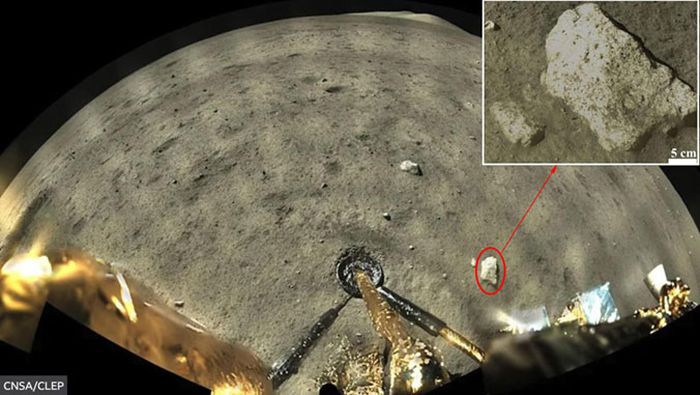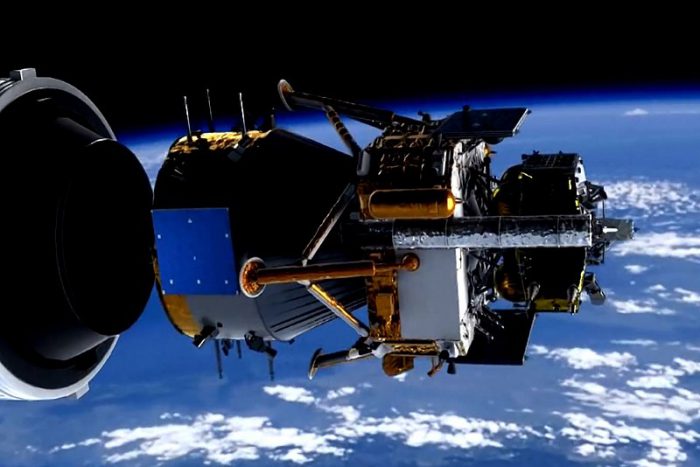They've done it! A craft on the Moon has found evidence of water there!
The craft in question—the China National Space Administration's (CNSA) Chang'E-5—actually made the discovery while examining a boulder near its landing site in December of 2020. As with many such findings, it has taken a while for the data to be properly analyzed and confirmed.
So, after many years of evidence found by orbiting spacecraft, water has finally been confirmed by a craft actually on the Moon. Congratulations, Chang'E-5! But what does this discovery mean?
Is it water like the water that we know when we walk by a stream or step out into a rainstorm? Does it help the future of missions to the Moon and a new lunar base? Let's take a look!
Very, very, very small amounts

The boulder that was analyzed by Chang'E-5 is circled in red. (CNSA)
This evidence of water was taken from measurements of a small boulder nearby its landing site. That's it in the photo above.
If you're confused trying to find the water in the photo, that's because it's contained deep within the boulder itself. And it exists on the microscopic level. Basically, the boulder's water content is 180 parts per million. In other words, the boulder is a mere 0.00018 percent water.
Try getting a drink from that!
What lies beneath?
So if that's all the water that is there, can we really say that water is on the Moon at all? True, it might not sound like much. But that fact that any water is there at all could be a clue that greater resources can be found somewhere deeper under the Moon's surface.
Which is, after all, the only place that it could exist.
Because the Moon has no atmosphere, it is not possible for pools of water to exist. They would simply evaporate and leave the Moon for good (whereas here on Earth, evaporated water gets collected in clouds and eventually falls back down as rain). But under the surface, it would be possible for significant, ancient deposits of water ice to remain. And if they do exist, they could theoretically be mined by future lunar colonists, like an on-site well.
Rocky clues

The capsule containing lunar samples from Chang'E-5 after it had returned to Earth. Collecting samples from the Moon is a real challenge. (Wikimedia Commons/China News Service)
The reason the scientists think this is possible is because the boulder that they analyzed likely came from an underground volcanic deposit—basically a collection of volcanic rock. The traces of water remaining on this boulder suggests that even more water is to be found somewhere on the Moon.
It's going to be quite the search, of course. Every investigation requires a craft like Chang'E-5 to visit and take measurement and samples. Then those need to be carefully analyzed by experts. It's a painstaking process, but the payoff could be huge. A source of water on the Moon would greatly increase the chances of future missions being a success.
 The Chang'E-5 probe—including the lunar lander—as it was leaving its rocket to head to the Moon in December 2020. (Wikimedia Commons/CNSA)
The Chang'E-5 probe—including the lunar lander—as it was leaving its rocket to head to the Moon in December 2020. (Wikimedia Commons/CNSA)










WOW! coool 💡 ❗
Woah! That Is SOOOOOOOOOOOOOOOOOOOOOOOOOOOOOOOOOOOOOOOOOOOOOO cool!!!!!!!!!!! 😛 😛 😛 💡
That is cool! 😆 😯 😀 😀 🙂 💡 💡 🙂